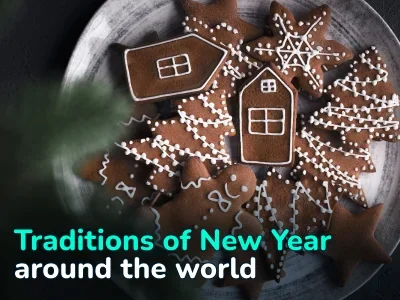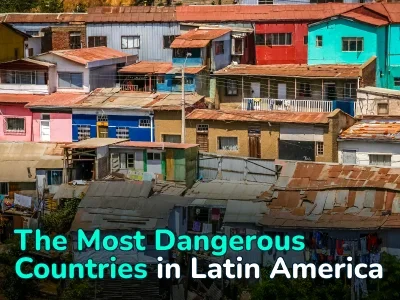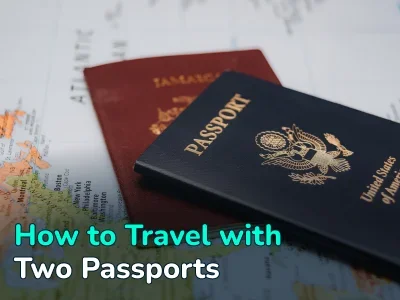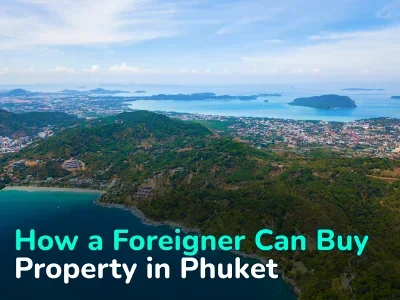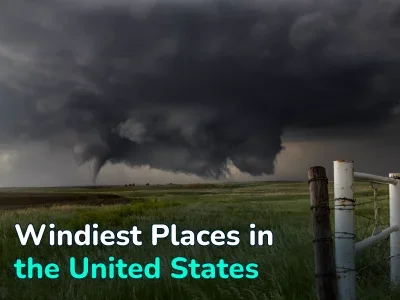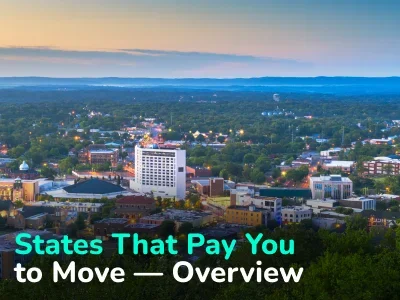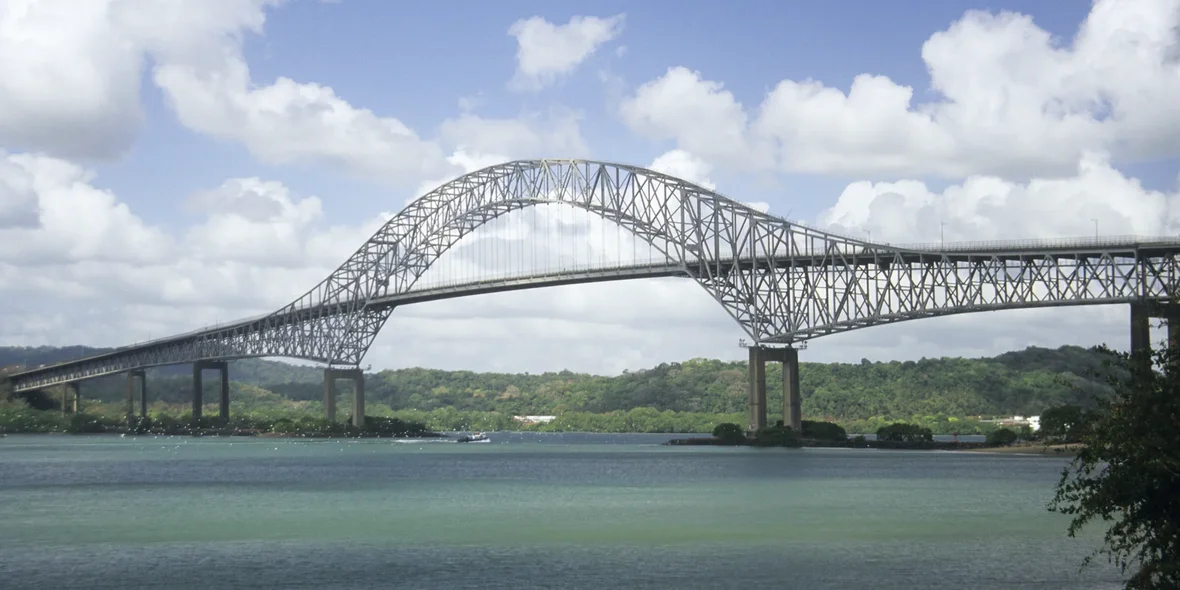
“Make Greenland Great Again”: Trump Threatens to Take Greenland from Denmark and the Canal from Panama
Donald Trump has announced his plans to establish control over two strategically significant territorial assets: Greenland and the Panama Canal. These announcements have already had an impact on international relations.
From Greenland to the Panama Canal
A private plane carrying Donald Trump Jr. landed at Nuuk airport, which is the capital of Greenland, on January 7.
The heir to the president-elect told reporters that he arrived in Greenland as a tourist and had only a few hours of daylight hours to see everything. However, his father, Donald Trump Sr. has already managed to characterize the visit as a diplomatic mission on his Truth Social network. He wrote that his family representatives landed in Greenland and the reception was great. According to him, this deal needs to happen.
Trump Sr. who will return to the White House in two weeks, has been actively promoting the idea of territorial expansion. At a press conference at Mar-a-Lago, he said he would not rule out using military force to take control of the Panama Canal and «acquire» Greenland.
"There are about 45,000 people living in Greenland. Nobody even knows if Denmark has a legal right to that territory," Trump said, adding that the island is needed by the U.S. for national security reasons due to the presence of Chinese and Russian ships in the region.

A plane carrying Donald Trump Jr. lands in Nuuk, Greenland, Jan. 7, 2025. Emil Stach/AP
Greenland is an exceptional territorial asset with a number of valuable characteristics:
- Total area: 2.16 million square kilometers.
- Proven natural resources: rare earth metals, oil, gas.
- Arctic shelf rights.
- Strategic location.
- Potential for port infrastructure development.
Current status of the real estate market
- Residential real estate market in Nuuk: prices range from $200,000 to $500,000 per property.
- Commercial real estate: prices are significantly lower than European prices.
- Foreign investors require special permits.
- Most of the land is publicly owned.
Panama Canal as an Infrastructure Asset
Along with the interest in Greenland, the US President-elect has indicated his intentions to regain control of the Panama Canal, which is an important infrastructure asset with the following indicators:
- Annual duty revenue: about $2.5 billion.
- Throughput capacity: 13-14 thousand ships per year.
- Current market situation: reduced capacity from 36 to 22 ships per day due to climate change.
Historical precedents for territorial transactions
To assess potential asset values, it is important to consider historical transactions (in terms of modern prices):
- Alaska (1867): $140 million.
- Louisiana Purchase (1803): $340 million.
- Virgin Islands (1917): $360 million.
- Greenland bid (1946): $1.3 billion in gold.
What the Authorities in Denmark and Panama are Saying
In response to Trump’s remarks, the head of Panama, Jose Raul Mulino, said that the canal is owned by his state and the issue is non-negotiable.
“The entire Panama Canal and its surrounding lands belong to Panama and will continue to belong to Panama,” he emphasized. — The sovereignty and independence of our country cannot be the subject of discussion.”
In response to threats voiced by the U.S. president, the Kingdom of Denmark took a symbolic step: King Frederik X changed the national coat of arms, making the image of the polar bear — the symbol of Greenland — more expressive.
Prime Minister Mette Frederiksen reaffirmed Denmark’s unchanged position: “Greenland belongs to the Greenlandic people.”
Greenlanders themselves do not seem eager to become U.S. citizens. Greenland’s head of government, Mute Egede, wrote on social media, “Greenland is not for sale and will not be for sale in the future.” He said the island is striving for independence and should not give in to panic and external pressure.
What About Canada?
In his far-reaching plans, Trump did not limit himself to Greenland alone. While discussing the political crisis in Canada, he said that many people in that country would like it to become the 51st state of the United States. In his opinion, this would allow Canada to avoid tariffs, lower taxes and provide protection from "Russian and Chinese ships."
The U.S. has been trying to acquire Greenland for nearly 80 years. In 1946, Washington offered Denmark $100 million in gold for the island. In 2019, Trump already tried to buy Greenland, but was rejected. It seems that the new attempt will also be doomed to failure, despite more aggressive rhetoric.
Panama Canal: Background Information
The Panama Canal is a key waterway that connects the Gulf of Panama of the Pacific Ocean to the Caribbean Sea and the Atlantic Ocean. The canal is located on the Isthmus of Panama and is 81.6 kilometers long. Of these, 65.2 kilometers are on land and 16.4 kilometers are in the marine section. The width of the canal is 150 meters and the depth is 12 meters.
History of Construction
The idea of creating a canal appeared in the XVI century, when the Spanish explorer Vasco Nunez de Balboa discovered that the Isthmus of Panama connects two oceans. However, the first attempts to realize this idea were unsuccessful.
In 1881, a French company led by Ferdinand de Lesseps, known as the creator of the Suez Canal, began work. However, due to the difficulties encountered, the project was abandoned due to illness and financial problems.
In 1904, the United States began construction of the canal, which continued until 1914. John Frank Stevens was appointed as the chief engineer. The cost of construction was about 400 million dollars, and about 70 thousand workers were involved in the works. According to various reports, from 5 to 25 thousand of them died due to illnesses and accidents.
The official opening of the canal took place on June 12, 1920.
Technical Features
The Panama Canal uses a system of locks to raise ships to a height of 26 meters above sea level. Fresh water from Lake Gatun is used for this purpose.
It takes about 236 million liters of water for one ship to pass through the canal. It takes approximately 8–10 hours to pass through the canal. On average, 13,000 to 14,000 ships pass through the canal per year, including large container ships and oil tankers.
The cost of passage through the canal depends on the size and carrying capacity of the vessel and can reach up to $450,000 for the largest vessels.
Economic Importance
The Panama Canal significantly shortened the sea route between the east and west coasts of the United States — from 22,500 kilometers to 9,500 kilometers. This has made it a key element of world trade: about 80% of goods are transported by sea, and the canal plays an important role in this logistics.
In recent years, there have been problems with the water level in Lake Gatun due to climate change, leading to restrictions on the number of ships passing through. Water levels have fallen to record lows, forcing the canal administration to limit the number of vessels from 36 to 22 per day.
Tourism
The Panama Canal is also a popular tourist attraction. Visitors can watch ships pass through the locks at the Miraflores Visitor Center or take a canal cruise. Cruises can last from a few hours to a full day, and offer a unique opportunity to see the canal’s operations from the inside.
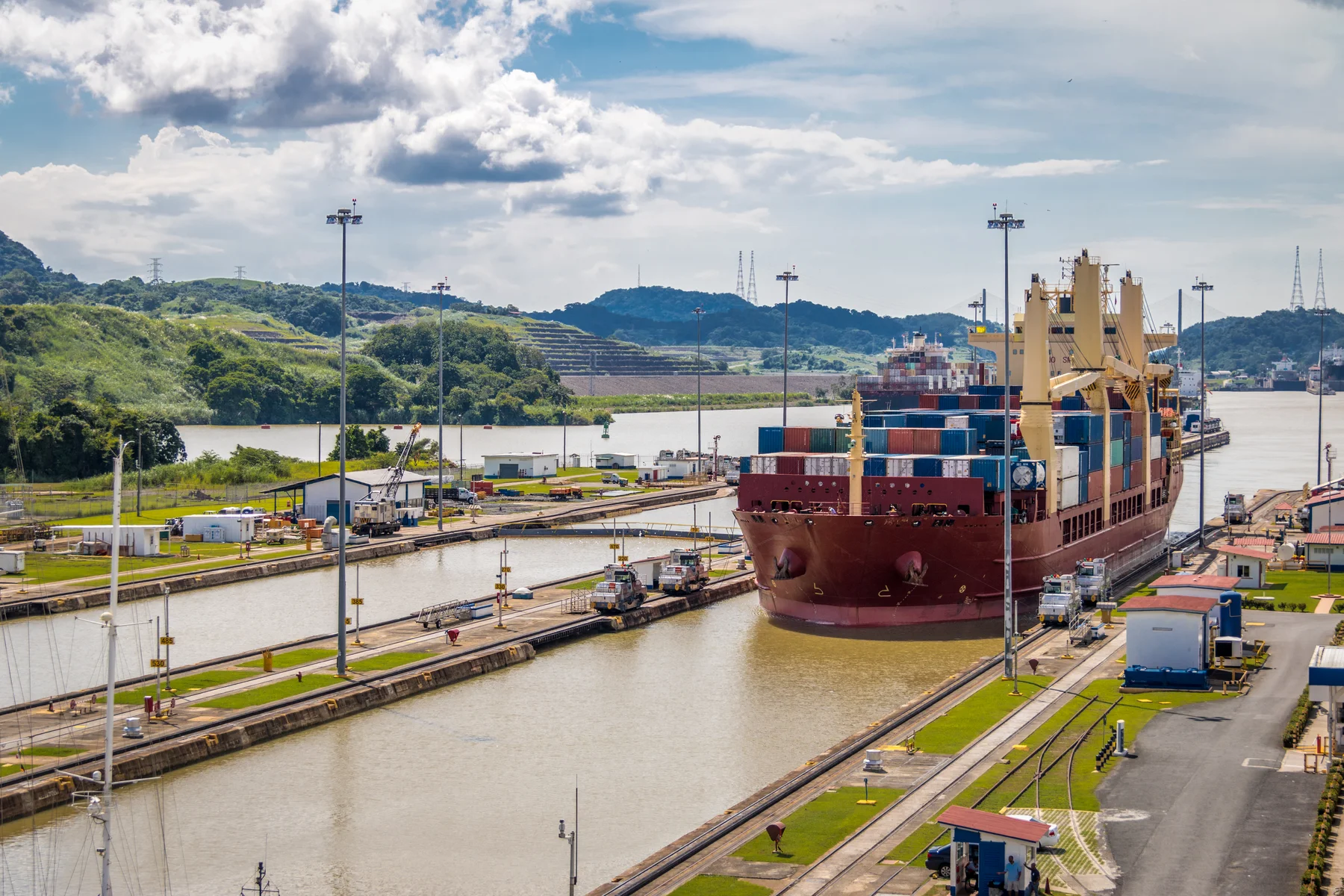
Greenland: Background Information
Greenland is the largest island in the world, located in northeastern North America. It is politically an autonomous territory within Denmark and is washed by the waters of the Atlantic and Arctic Oceans, covering an area of 2,166,086 square kilometers.
Geography and Climate
Greenland is characterized by a harsh Arctic climate that covers about 80% of its territory, making it one of the largest icy ecosystems on the planet. The highest point of the island reaches 3,694 meters above sea level. Greenland is about 2,700 kilometers long from north to south and about 1,300 kilometers long from west to east.
The climate varies from polar in the north to more temperate in the southwest, where most of the population centers, such as the capital Nuuk (Gothob), are concentrated. Summers are short and cool, while winters are harsh and long.
History of Exploration
Greenland’s history dates back several millennia. The first inhabitants, known as the Sakku, arrived on the island about 4500 years ago. In the ninth and tenth centuries, Vikings led by Erik the Redhead established colonies in the south of the island. The name Greenland (Danish Grønland) was chosen to attract new settlers, although much of the area was covered by ice. The Scandinavian colonies lasted until the 15th century, after which they disappeared. In the 13th century, the Inuit arrived on the island, who are the main population of Greenland to this day.
Population and Culture
As of 2023, the population of Greenland is about 56,000, of which about 90% are Inuit (Kalaallit). The official language is Greenlandic, but Danish is also widely used in government and educational institutions. Greenlandic culture is closely linked to Inuit traditions. The locals engage in hunting and fishing, preserving their unique customs and traditions.
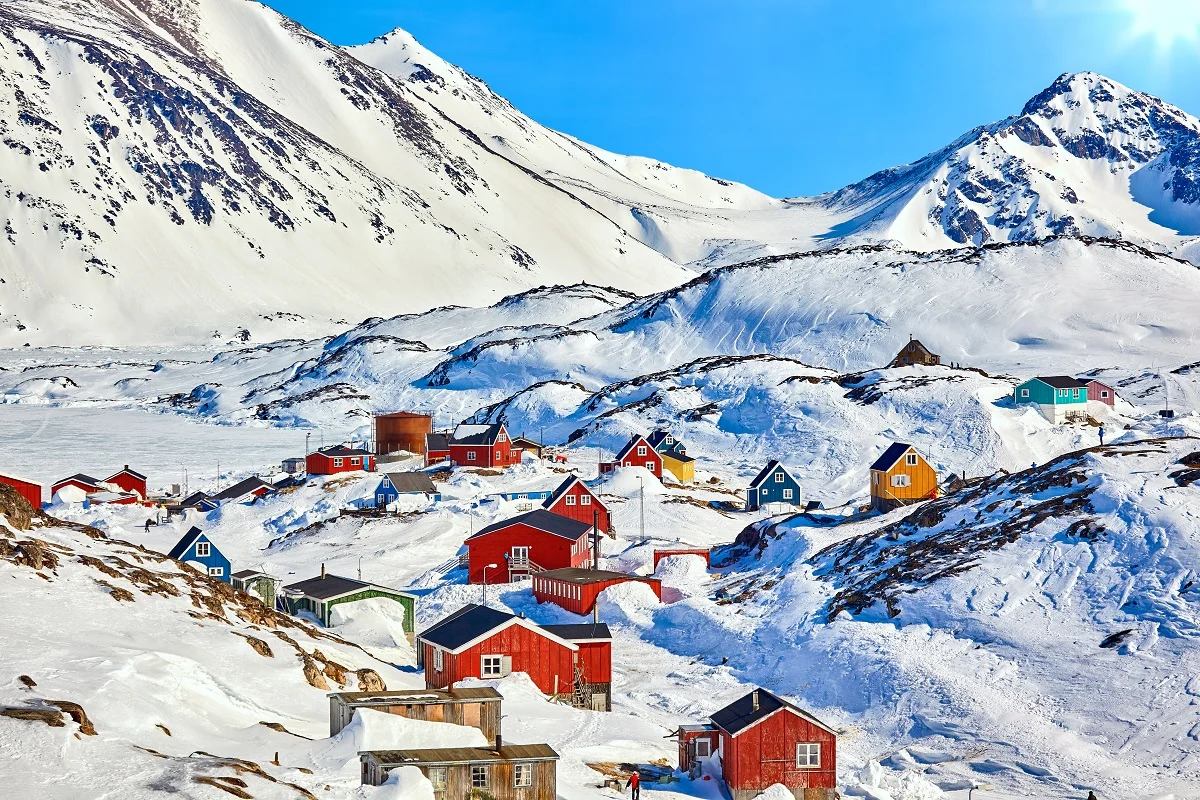
Economy
Greenland’s economy is based on fishing, hunting and tourism. Major exports include fish and seafood. In recent years there has also been interest in mining and hydrocarbon extraction. However, economic development faces challenges due to the harsh climatic conditions and remoteness of the region.
Political Status
Greenland has been a self-governing territory of Denmark since 1979. Despite autonomy, Denmark retains control over the island’s foreign policy and defense. Issues of self-government and independence remain relevant to many residents.
Environmental Issues
Climate change is having a significant impact on Greenland. Melting glaciers are causing sea levels to rise, threatening coastal areas around the world. Studies show that if the entire Greenland ice sheet were to melt, global sea levels could rise by about 7 meters.
Greenland is also known for its natural beauty: fjords, glaciers and unique flora and fauna adapted to Arctic conditions. These natural resources attract tourists from all over the world.
Author
I am responsible for editorial work. I write expert interviews and guides.










